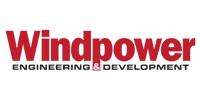 NV Energy has issued a request for proposals that could add up to 330-MW of new renewable energy projects to be built in Nevada. This additional commitment to renewables, which includes the potential integration of battery energy storage systems, will provide enough carbon-free electricity to power about 200,000 Nevada homes.
NV Energy has issued a request for proposals that could add up to 330-MW of new renewable energy projects to be built in Nevada. This additional commitment to renewables, which includes the potential integration of battery energy storage systems, will provide enough carbon-free electricity to power about 200,000 Nevada homes.
“As important as this opportunity is to further the state’s desire for clean energy, equally important is that we expect to deliver these renewable projects to customers without increasing rates,” said NV Energy’s President and Chief Executive Officer Paul Caudill.
The request for proposals seeks wind, solar, geothermal biomass and biogas technology projects that are compliant with Nevada’s existing renewable portfolio standards. NV Energy will also, for the first time, consider adding supplemental battery energy storage systems that are integrated with the proposed renewable energy resource.
“Since 2009, NV Energy has more than tripled its in-state renewable energy production and our electricity prices today are 15% lower than they were at that time,” explained Caudill. “We expect these new projects to provide some of the lowest-cost renewable energy available in the market, which will directly benefit our customers. In fact, adding these new renewable projects serves to diversify the portfolio we use to provide power across the state and protects against the risk of increases in the price of natural gas used to generate electricity,”
The new projects will be competitively evaluated on a number of factors, including best value to customers of NV Energy and creation of economic benefits to the State of Nevada.
Click Here to Read Full Article
read more
 Deployment of energy storage, especially batteries, will increase substantially in the next few years.
Deployment of energy storage, especially batteries, will increase substantially in the next few years. Harvard researchers have identified a whole new class of high-performing organic molecules, inspired by vitamin B2, that can safely store electricity from intermittent energy sources like solar and wind power in large batteries.
Harvard researchers have identified a whole new class of high-performing organic molecules, inspired by vitamin B2, that can safely store electricity from intermittent energy sources like solar and wind power in large batteries.
Recent Comments